 |
|
It isn’t rocket science why UCLA, a university that has produced seven Nobel laureates, is a preeminent academic institution with a global reputation of excellence. However, some things are not so easy to understand—such as the groundbreaking research and complex findings of those seven great minds. Take a comprehensive look below at the works of UCLA’s greatest thinkers and the contributions that won them one of the most prestigious academic prizes.
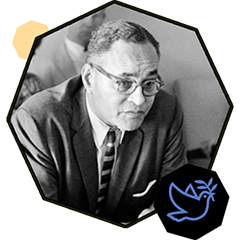
|
Ralph Bunche ’27
The Nobel Peace Prize 1950
Ralph Bunche was the first African American to be awarded the Nobel Peace Prize. He received the award for arranging a cease-fire during the first Arab-Israeli war. In 1946, Bunche went into UN service, and in the following year Secretary-General Trygve Lie sent him to the Middle East to help devise a plan for dividing Palestine between the Arab and Jewish communities. The resolution was rejected and a war subsequently erupted. When the chief UN negotiator Folke Bernadotte was murdered in the autumn of 1948, Bunche replaced him and succeeded in bringing about a cease-fire after tough negotiations. Bunche has become a paragon of peace and unity as well as a shining example of what it means to be a True Bruin.
|
|
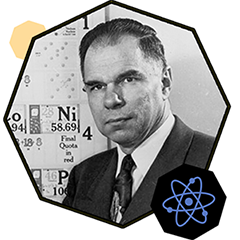
|
Glenn T. Seaborg ’34
The Nobel Prize in Chemistry 1951
The heaviest elements existing in nature, like uranium, which has an atomic number of 92, are radioactive and quickly decay. It has become apparent, however, that these weighty elements can be created by bombarding atoms with particles and atomic nuclei. In 1940, Bruin Glenn Seaborg succeeded in creating an element with an atomic number of 94 called plutonium. This new substance became a crucial component for nuclear weapons, nuclear medicine, space travel and nuclear energy which powers our world.
|
|
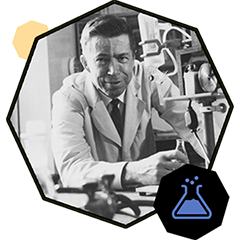
|
Bruce Merrifield ’43, Ph.D. ’49
The Nobel Prize in Chemistry 1984
Bruce Merrifield had a simple solution to speed up the synthesis of proteins, and parts of proteins, know as peptides: nail down the first building block of the protein on a solid surface. After laying the foundation, the rest of the building blocks could be added and the remaining impurities washed away. This process dramatically streamlined scientific experimentation and aided in the development of many pharmaceutical drugs.
|
|
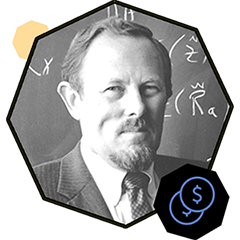
|
William Sharpe ’55, M.A. ’56,
Ph.D. ’61
The Sveriges Riksbank Prize in Economic Sciences 1990
A triple Bruin, Sharpe developed a general theory for the pricing of financial assets. Sharpe's theory, called the Capital Asset Pricing Model, is a way of matching potential gain from an investment with the potential risk. His model is considered the standard for the investment industry and is used by corporate, institutional and pension fund managers to plan and judge their investments. Describing his work, Sharpe stated: “Basically, the more market risk you take the greater should be your expected long-run return."
|
|
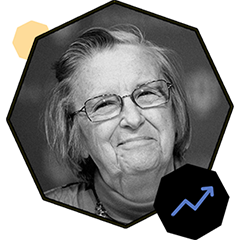
|
Elinor Ostrom ’54, M.A. ’62,
Ph.D. ’65
The Sveriges Riksbank Prize in Economic Sciences 2009
Most political scientists begin their research with a hypothesis which is then put to the test. Elinor Ostrom saw research differently – she started with an actual reality instead. Ostrom gathered information through field studies and then analyzed this material. Challenging the conventional wisdom of the day, she demonstrated how local property can be successfully managed by local communities without any regulation by central authorities or privatization. Her research methods and findings had an enormous impact on the future of political science and economics.
|
|
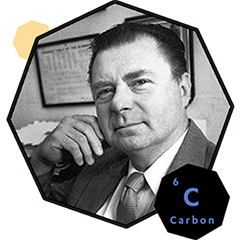
|
Richard F. Heck ’52, Ph.D. ’54
The Nobel Prize in Chemistry 2010
Richard F. Heck won the Nobel Prize in Chemistry for creating techniques that create complex carbon molecules more efficiently. Rather than building an intricate organic molecule from scratch, Heck shortened the process by combining two carbon atoms to form one molecule. This discovery drastically influenced the development of electronics, such as display screens, and medicine including treatments for asthma, migraines, H.I.V. and cancer.
|
|

|
Randy W. Schekman ’71
The Nobel Prize in Physiology or Medicine 2013
The cells inside our bodies produce a host of different molecules that are sent to specific areas. During transport, some molecules group together in structures called vesicles. These small sac-like structures help cells organize activity and communicate with their environment. During the 1970s, Schekman studied yeast cells to demonstrate how different genes regulate the transportation process. His astounding work led to the success of the biotechnology industry, important pharmaceuticals and our overall understanding of the complicated human body.
|
|
|
In addition to the seven trailblazing Nobel laureates listed above, UCLA has been the breeding ground of 17 MacArthur Foundation Fellows, 11 Rhodes Scholars, three Pulitzer Prize winners, two National Medal of Science recipients, two U.S. Poet laureates and one Turing Award winner.
|
 |
|








